29+ Sample Scope Statements
-
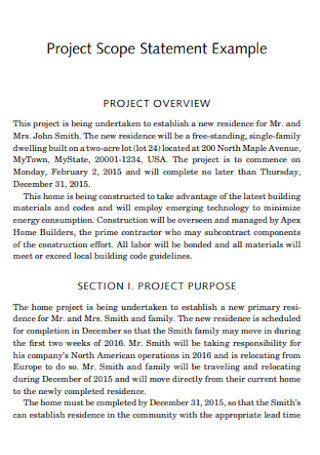
Project Scope Statement Example
download now -
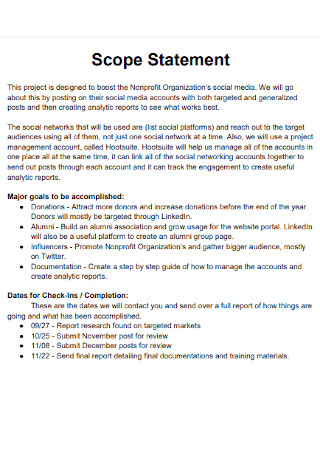
Sample Scope Statement Template
download now -
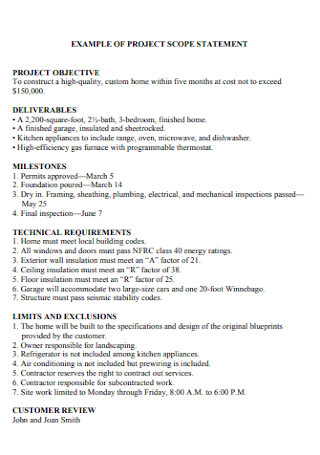
Sample Project Scope Statement
download now -

Scope Statement of Revenue
download now -
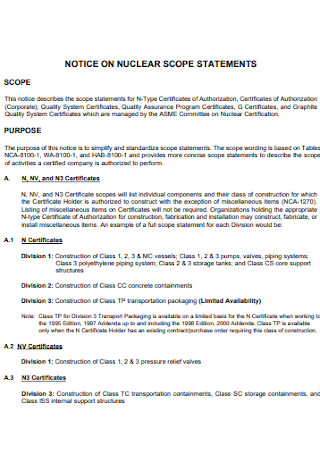
Notice on Nuclear Scope Statement
download now -
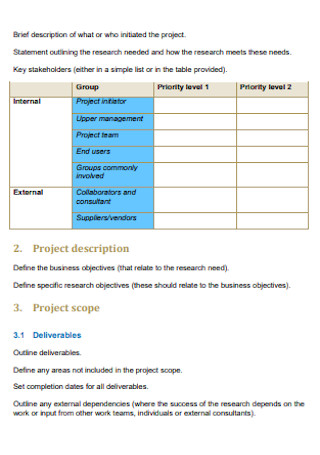
Research Scope Statement
download now -
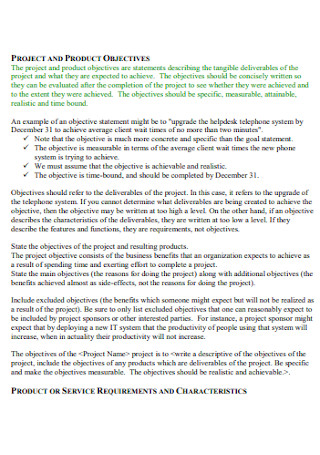
Company Project Scope Statement
download now -
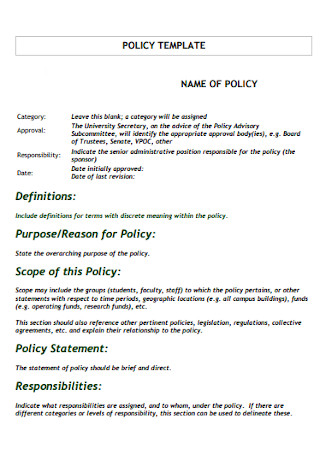
Scope Policy Statement
download now -
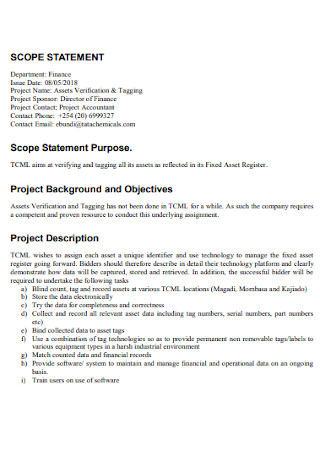
Simple Scope Statement Template
download now -

Code Documentation Scope Statement
download now -
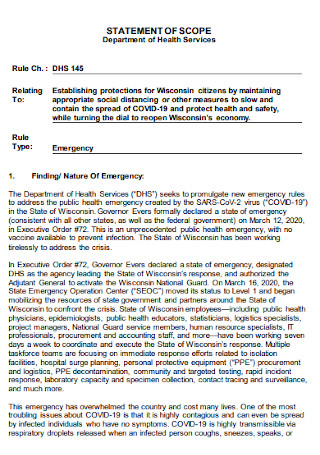
Scope Statement of Health Service
download now -
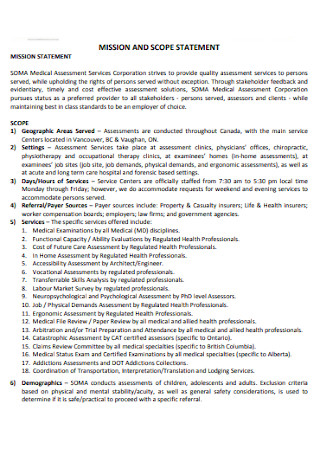
Mission and Scope Statement
download now -
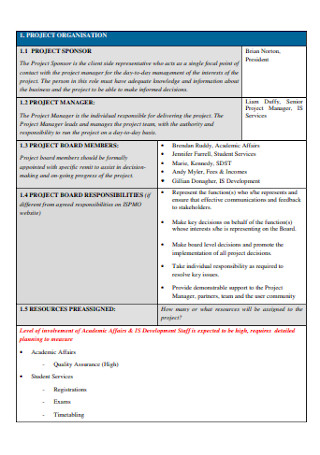
Project Charter and Scope Statement
download now -
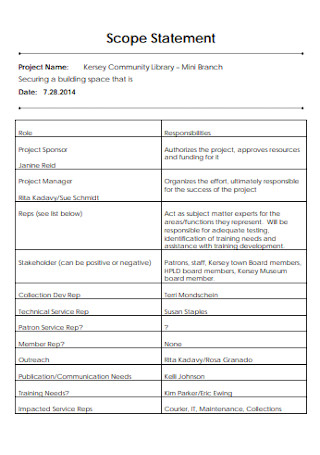
Standard Scope Statement Template
download now -
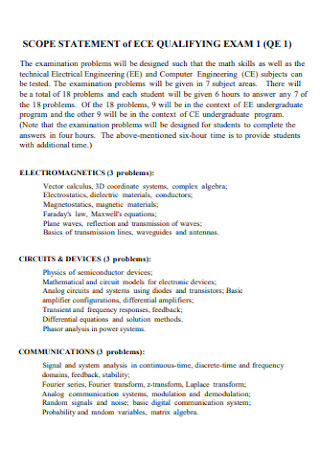
ope Statement of Qualifying Exam
download now -
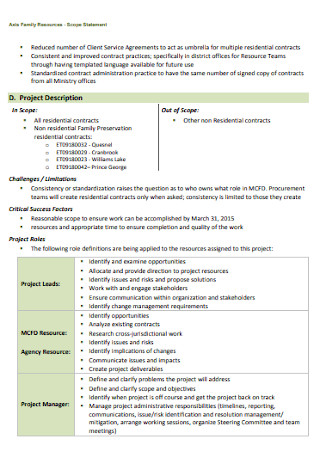
Flexibility Intiative Scope Statement
download now -
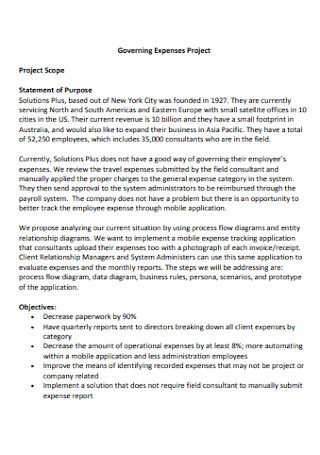
Scope Statement of Purpose Template
download now -
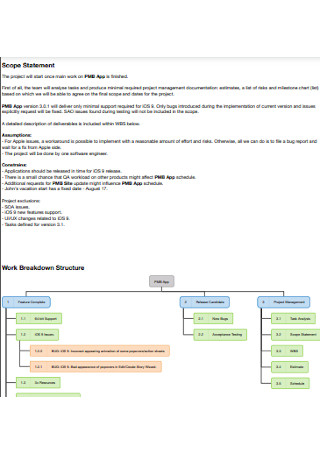
Formal Scope Statement Example
download now -
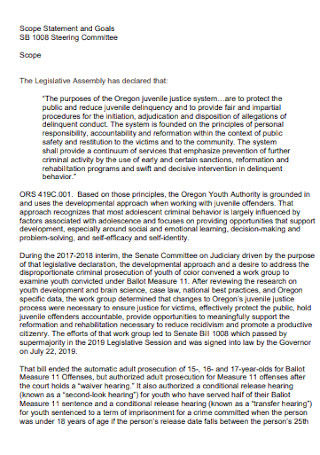
Scope Statement and Goals Template
download now -
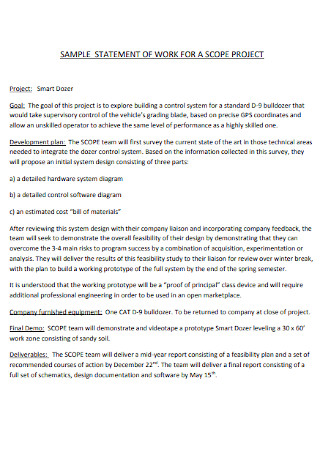
Scope Statement of Work Template
download now -
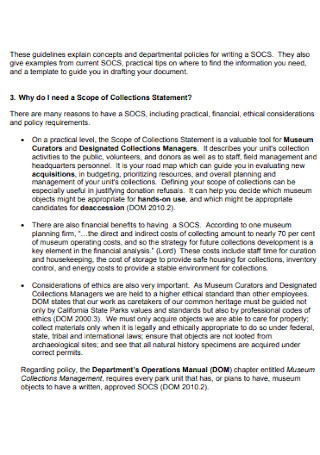
Scope of Collections Statement
download now -
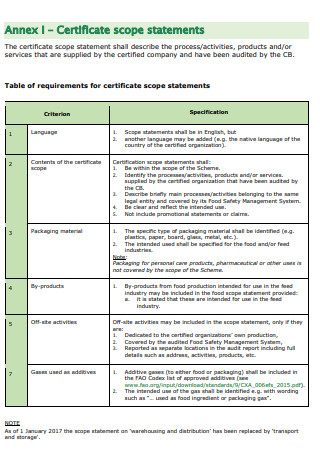
Certificate Scope Statement
download now -

Market Study Statement of Scope
download now -

Scope Policy Statement Example
download now -
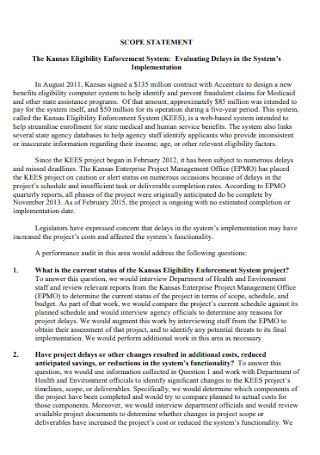
Simple Scope Statement Example
download now -
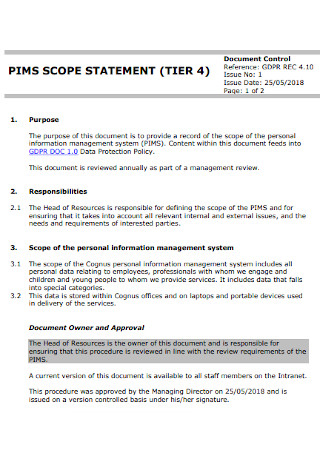
Scope Document Statement
download now -
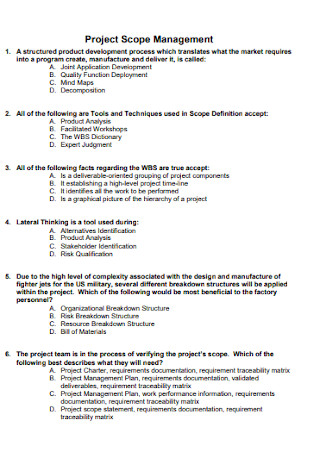
Project Management Scope Statement
download now -
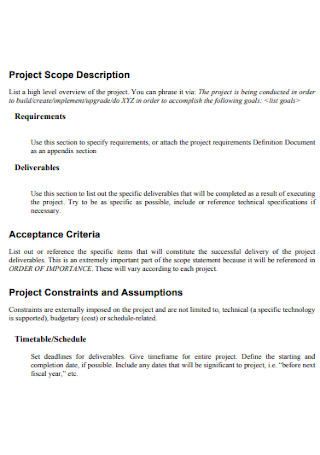
Project Scope Description Statement
download now -
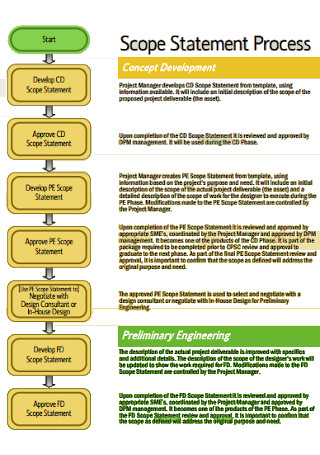
Scope Statement Process Template
download now -
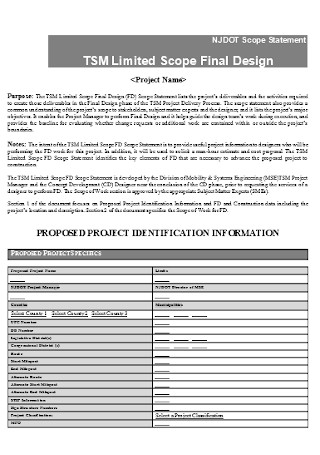
Scope Final Design Statement
download now
FREE Scope Statement s to Download
29+ Sample Scope Statements
Scope Statements: What Are They?
What Should a Scope Statement Include?
Developing a Complete Project Scope Statement in Two Days
How to Write a Compelling Scope Statement Using a Template
FAQs
How is a project scope statement different from a project scope management plan?
What are the different types of statements?
When to use a scope statement?
Scope Statements: What Are They?
A scope statement is an effective communication plan that outlines an entire project’s deliverables and features, as well as a list of stakeholders who are involved in the execution of that project. Usually, it is written by the project manager and includes objects and goals to help measure success.
According to the Project Management Institute, the project scope statement tries to reduce uncertainty by indicating the scope and ensuring all key stakeholders are on board and have a clear understanding of the project plan. If you invest in creating a strong process, there will be fewer change requests. Then you have a better chance of success. Based on a report published by Saaslist, poor communication costs small businesses, with a number of employees between 100 and 100,000, $420,000 up to $62 million every year.
Meanwhile, Saaslist found out that poor communication costs small businesses $420,000 up to $62 million every year.
What Should a Scope Statement Include?
Whether a business builds bridges, software, or cell phones, the work that they need to do to come up with these finished products is managed as a series of projects in which with specific objectives, timelines, and budgets. But before anyone can work on time and as expected, they need to know what has to be done and why it is important. In this case, every company needs a project scope statement that provides a detailed description of the entire project. A project scope statement is more than just the tasks that need to be delivered by your team. It is part of project management, which means it is part of a bigger picture. And to properly outline your scope statement, you must address the following:
Developing a Complete Project Scope Statement in Two Days
As it involves ensuring all the required work necessary to complete the project is accomplished, the project scope statement considers any work that does not support the needs of the projects is out of scope and should be performed. Although this concept is obvious, only 29% of projects are completed successfully. This means the remaining 71% of projects either fail outright or are challenged—completed over budget, behind project schedule, or deliver fewer features and functions. To avoid the factors associated with project failures, here is how you can develop a complete project scope statement in two days:
Define Business or Project Objective
Objectives have two levels: the business objective and the project objectives, which are what is expected for the organization to achieve. They are the reason for the changes in completing the project. The business objective is described as the high-level results the organization expects to achieve relative to the overall business models. On the other hand, project objectives are goals associated with the project. Hence, objectives have to be clarified in the scope statement; otherwise, your team will get confused about the information and tend to include too many details.
Create Context Diagram, Business Processes, and External Entities
A project needs a high-level picture that depicts the boundaries of the project. And that is what a context diagram is for. It communicates what is the “in scope” for the project and is one of page process logic models built at level zero and so on. Even though the details of the project are not clear at this point, understanding the major pieces of functionality and interface points is identifiable. The context diagram includes two components. They are business processes and external entities. By definition, a business process is actions or capabilities that will be affected by the project. Meanwhile, an external entity is a person, organization, or system that performs processes outside the scope of the project.
Indicate Critical Success Factors
A critical success factor establishes major expectations the project must accomplish to be considered a success. There are many ways for your team to provide solutions for the project, but if a solution does not satisfy the critical success factors, the project is a failure. In other words, this indicator of success is actually high-level requirements for the project flow.
Make Project Assumptions
All project assumptions represent a decision the project team believes is valid. Or may not be valid but they have little control over it. In fact, other project deliverables are influenced by these decisions and are assumed to be valid. Because of their uncertainty, project assumptions contribute to risk identification during the risk management process. Project assumptions are described as the availability of other project deliverables and resource dependencies affecting the project.
Propose Product and Service Solution
The proposed product or service solution is a statement(s) describing the approach the project team is considering for the completion of the project. At this point of the project phase, project team members should start to consider making or build decisions for the project as well as decisions for phasing, prototyping, and pilots. The work breakdown structure or WBS influences the decisions documented in this deliverable. The statement includes consideration of the following: product evaluation, product purchase, product build, product re-use, and product build/purchase.
Conduct SWOT Analysis
Why there is a need for SWOT analysis? Because it is a useful framework for analyzing your organization’s strengths, weaknesses, opportunities, and threats. It helps you build on what you do well, address what you are lacking, minimize risks, and take the greatest possible advantage of chances for success. Additionally, SWOT analysis is an assessment of the current environment, which is documented before developing project requirements and solutions.
Follow Up Tasks
To complete the project scope statement, it is important for your team to agree on the next step. There may have been issues identified while developing the method statement which could not be resolved due to time constraints, lack of appropriate decision-makers, or the resolution to the issue was not crucial at this point of the project lifecycle. Follow up tasks are created to ensure resolution to these issues is achieved. Ensuring tasks are completed, a responsible person must be assigned to each task and allocate a realistic date for completion.
How to Write a Compelling Scope Statement Using a Template
Writing a scope statement might sound a lot, but it is easier than you think. The best way to do it is by using a statement template. Start browsing through our website to unveil a collection of ready-made stencils fitting for your business needs. If you want a working scope statement, consider the following tips in making one.
Step 1: Avoid Using Jargon and Heavy Language
You will be dealing with different departments like online marketing, HR, and finance, and many people will read the scope statement. Because of that, it must be easy to understand. Thus, avoid using jargon and heavy language will keep your statement consistent and it will put the message you want to convey across.
Step 2: Keep It Short
Because the scope statement is seeking stakeholder buy-in, there will likely a lot of editing to be done before it is finalized. Also, the scope statement will be a quick reference guide later on. So, make sure it is simple, and save your words for the full project report. Also, aside from stakeholders, there are other people who will read the scope statement. By keeping it short and simple, you can ensure that these people can easily understand the document. This also a courtesy to them from reading lengthy paragraphs.
Step 3: Avoid Sweeping Statements
Defining reach and establishing limitations are the main intent of your scope statement. Other things that are not mentioned in your statement are not your responsibility. So, do not over-commit to the project before it even starts.
Step 4: Make Sure It Answers Questions
Make sure your scope statement answers the following questions: “What are the long-term business benefits?” “What does it provide our customers that do not already exist?” and “Is this better than what we currently offer on the market?”
FAQs
How is a project scope statement different from a project scope management plan?
They might sound similar because their outcomes can be the same. However, a project scope statement is followed by a scope management plan detailing a project from start to finish.
What are the different types of statements?
- Profit and Loss Statement
- Diversity Statement
- Endorsement Statement
- Teaching Statement
- Billing Statement
- Confidentiality Statement
- Vision Statement
- Mission Statement
When to use a scope statement?
You can use a scope statement when you manage a project. It should be part of your plan and provide a detailed description of the works that must be done.
Project management asks a lot from project managers. But you do not have to worry about putting every task in place because you can do it properly with a scope statement. For more statement templates and other types of business stencils, visit our website today and get the chance to sign up for any of our subscription plans.
